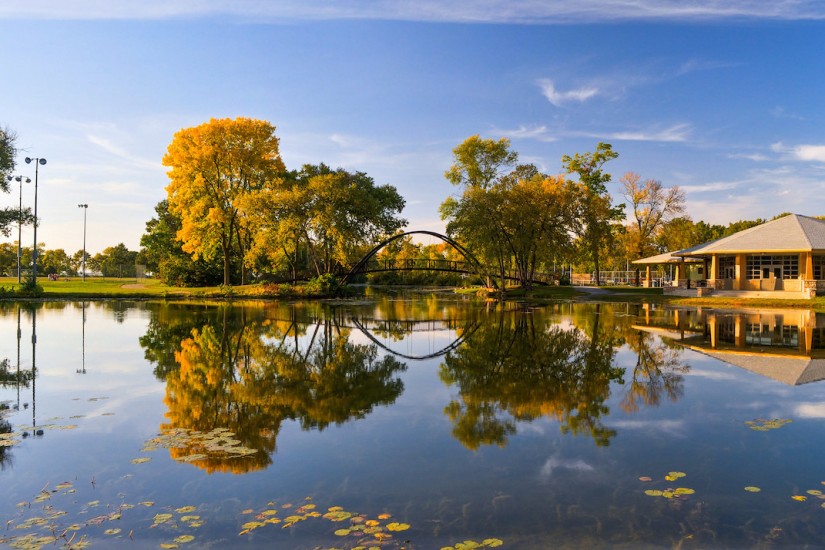What I find most interesting about Madison’s park history is how the group’s manipulation of nature as a technology to combat the effects of industrialization reveals two entwined contradictions.
First, the technology and urban growth that the earliest members of the Madison Park and Pleasure Drive Association were trying to escape are also what made possible the group’s ambitious project of landscape re-architecture. With each new project, wetlands were filled in, lagoons created, and waterways were dredged, deepened, and reshaped for aesthetic appeal. For example, cutting across what is today both Goodman and Olin Parks, Wingra Creek was shaped in a straight path for no other purpose than becoming more “delightful.” Further, each of the association’s reports detail annual plantings that prioritized “native” species that would create visual buffers and aesthetic pleasure, giving the carefully curated sense of a wild—even pre-contact—nature. Nature became a technology capable of neutralizing encroaching urbanization, so that park spaces participated in city-wide “greening efforts” meant to erase the negative visual, social, and health effects of its industry.
In light of the damage done by last fall’s historic floods, I have to wonder if there isn’t a cost that comes with this sort of sweeping land redesign. Today, Madison faces increased flooding risks due to climate change—risks that are exacerbated by drained wetlands and lake waters kept at artificially high levels to satisfy residents with lakefront homes, business owners, and boaters who make use of aquascapes accessible through city parks.
The second point of contradiction is the way that parks development reshaped and regulated landscapes in order to erase the presence of local Native Americans, while simultaneously claiming that these very landscapes were culturally significant because of Native American presence. This violent legacy of settler colonialism underwrites the very possibility of using nature as a technology to shape America’s developing park system.
